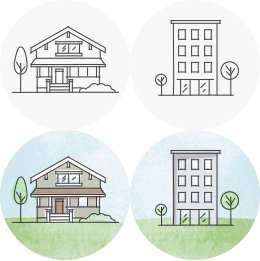During storm events, significant damage can be anticipated. Trees often fall victim to storms, with their age and robustness offering little protection. The resultant damage to trees can leave them looking unsightly, prompting a desire for their removal.
Depending on the size of the tree and whether it is an emergency, you will pay $200-$2000 to remove a storm-damaged tree. The average cost of tree removal is $750. A standing tree costs more to remove than a fallen tree.
Storms may bring down trees and cut down branches. They can leave tree stumps or cause accidents and injuries. All of these will affect tree removal costs after a storm.
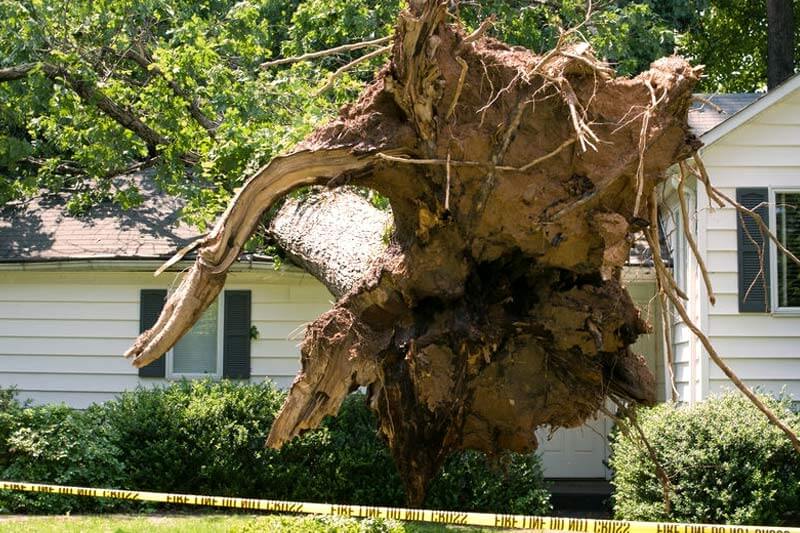
What we cover
ToggleCost of removing a storm damage/fallen tree by size
| Tree Height | Price |
|---|---|
| 15ft | $150-$190 |
| 25ft | $400-$600 |
| 35ft | $900-$1,400 |
| 50ft | $1,400-$2,100 |
The easier it is to remove a fallen tree, the less you will pay. The harder it is to remove the tree, the more you will pay.
Additionally, the taller the tree the more it costs to remove.
Factors affecting storm damage tree removal cost
Emergency removal
During a storm, it is likely that a tree will fall. If the tree falls on a home, car, or path, tree removal is an emergency.
Emergency tree removal costs more than regular tree removal. Why? It costs more than regular tree removal because the tree removal service provider you call must stop everything and handle your emergency.
You will pay $879-$6,000 for emergency tree removal. The cost of emergency tree removal may double or triple regular tree removal.
Size of the tree
The larger the tree, the more you will pay for its removal.
Professional tree removers assess the tree size to determine how much to charge. Therefore, the higher the tree, the more you will pay. The larger the trunk diameter, the more you will pay for tree removal.
Obstacles
Obstacles or other things around the tree to be removed will impact the cost of removal.
Trees near electricity wires1 or other utilities will be hard to remove. It is more expensive to remove a tree that is around obstacles. The more difficult it is to remove a tree, the more you will pay for its removal.
State of the tree
The healthier the tree, the more difficult it is to remove. A dead tree is easier to remove than a healthy tree.
Tree removal service providers charge more to remove healthy trees. It will take a longer time to cut through a healthy trunk than a dead tree.
Storms damage both healthy and unhealthy trees. The state of the tree will determine how much you will pay to remove the damaged tree.
Additional services
Tree removal service providers also provide additional services. These services are charged separately from the tree removal.
If the storm made your tree fall, you need to remove tree stumps left on the ground.
Stump removal charges depend on the type of tree. Easy-to-remove stumps are cheaper.
Other additional services include debris removal, converting the tree to firewood, and cleaning up. You will pay for these services separately.
Factors to consider when removing storm damage trees
Condition of the tree
Storms3 affect trees in different ways. Some trees that will be removed after a storm may have broken branches, uprooted, or split into two. Others may be hanging in the air, suspended by broken branches, or other items.
Depending on the condition of the tree, you will need a professional to remove them. Trees that have not reached the ground after a storm are likely to cause damage to nearby property when they do.
They are also prone to cause injuries when handled improperly. It is best to have professionals handle the tree.
Is it an emergency?
You can expect a high demand for emergency tree removal after a storm. Consequently, the price for tree removal will be high.
Therefore, consider whether you need to call for tree removal as an emergency. If you need emergency tree removal, call your local emergency providers first. They will then call a tree removal professional. It will save you the high cost of emergency tree removal.
If you don’t need emergency tree removal, you can DIY tree removal for storm-damaged trees or hire a pro when the demand is down for a better price.
Home insurance
If a tree falls on your property after a storm, contact your home insurance2 provider. They will assess the damage and hire a tree removal service for you. They will also pay for any repairs on the damage caused to your home by the tree or storm.
Do you need removal?
When a tree falls after a storm, you may not have to remove it. You can save money by choosing to cut it up or only cut the branches off.
You can hire a professional arborist to cut the branches or chop the fallen tree into firewood. This costs less than having to uproot and remove the remaining tree stump.
You can also choose to sell the firewood if you will not use it.
Who is responsible for fallen tree removal?
Here are three scenarios to help you understand who should be responsible for fallen tree removal.
If your tree falls on your land
If a tree growing on your land falls on your land, you are responsible for tree removal. You will call your preferred tree removal service or handle it yourself. You can also engage your home insurance provider if the tree damages your property.
If your tree falls on your neighbor’s land
If a storm or strong winds cause your tree to fall on your neighbor’s land, it is your responsibility to have it removed. You will hire and pay for tree removal services to remove the tree from your neighbor’s compound.
Also, discuss with your neighbor to allow the removers access to their property to make it easier to remove the fallen tree.
For any damage on the neighbor’s property, they should inform their home insurance provider to cover the damage. You will pay for any damage on your neighbor’s property that is not covered by insurance.
If your neighbor’s tree falls on your land
If a tree falls into your compound from your neighbor’s land, who is responsible for its removal?
Just like you are responsible for removing your tree that falls on your neighbor’s property, your neighbor is also responsible for removing a tree that falls on your property from their land.
Your neighbor will inform their insurance company to cover any damages on your property caused by the fallen tree. The neighbor will pay for all damages not covered by insurance.
Does every fallen tree need emergency removal?
If a fallen tree does not cause loss or injury, you do not require emergency tree removal.
Emergency tree removal is expensive. You can save money by not qualifying every storm-damaged tree as needing emergency removal.
If a tree falls away from your home or roads, it does not qualify as an emergency removal. You can assess it and determine what you want to do with it.
Why do you pay more for emergency tree removal?
- Emergency tree removal is dangerous and requires specialized skills and tools and may take more time.
- After hours
- The tree removers could increase their price after a storm due to high demand.
- They have to leave all other jobs to attend to your emergency.
How to save money on emergency tree removal
- Call your local emergency services. They will hire a tree removal service to remove the fallen or storm-damaged trees.
- Move the tree by yourself
- You can cut it up into firewood or
- You can sell it to a logging company to convert it into timber for sale.
- Call a removal service when they have low demand.
- Collect quotes from at least three tree removal service providers and hire one within your budget.
- Call your power provider to cut down trees growing near electricity wires.
- Avoid emergencies by regularly assessing your trees for health and stability. You can have an arborist do it for you.
- Cut up the branches instead of having the whole tree removed.
When do you need tree removal?
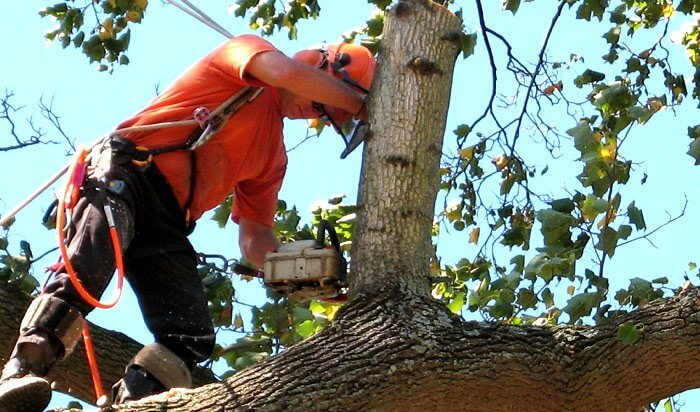
Dead tree
A tree can be dead or alive. Have a professional arborist check your trees to assess their health status.
If your tree is dead, have it removed. Dead trees cannot be brought back to life. They are a hazard especially if they are close to your home. In case of a storm, a dead tree will fall on your property easily.
You do not need to remove healthy trees. An arborist can help you maintain and keep it healthy.
Diseased tree
A tree on your land could have a fungal infestation. First, check the other trees near it. If they are not infected, call an arborist.
The arborist will assess the tree and determine whether to remove the tree or find a way to treat the infestation.
For a large infestation, the tree will have to be removed. If not, it can easily transmit the fungus or disease to the other trees near it.
Depending on how far the infestation is gone, the tree could have started rotting. A rotting tree is structurally unstable.
It is better to have a rotting tree removed than wait for it to fall on its own. It could cause damage to property and injuries.
Tree growing on utilities
You need to get tree removal services for trees growing on or near utility services. Trees growing under electricity wires, or near drainage or water pipes need to be removed.
You can contact the utility company to have the trees removed. Or, if the trees are on your land, you can have them removed.
Depending on the tree species and the number, you can sell the trees to a logging company instead of paying for their removal.
Tree growing too close to your home
Trees growing too close to your home need to be removed. They are a danger to your home and any property near them.
As the tree grows, it may grow so large that the branches can damage the windows or roof of the house.
The roots may also affect the foundation of your home and cause cracks in the walls.
DIY vs hiring a pro for tree removal
Tree removal is best handled by a pro. They have the training to do it fast and correctly.
Additionally, they are licensed and insured. If an accident happens, they can cover their costs or medical bills easily.
If accidents that cause damage happen when you DIY, you will have to pay for the repair yourself.
Pros also have the safety gear to remove trees without causing any damage to any property near the tree. They can also assess a tree to determine the most efficient method for its removal.
DIY tree removal is best when removing short trees. You can remove trees by yourself if they do not exceed 15 ft in height. For taller trees, hire a pro.
You can also DIY tree trimming and care.
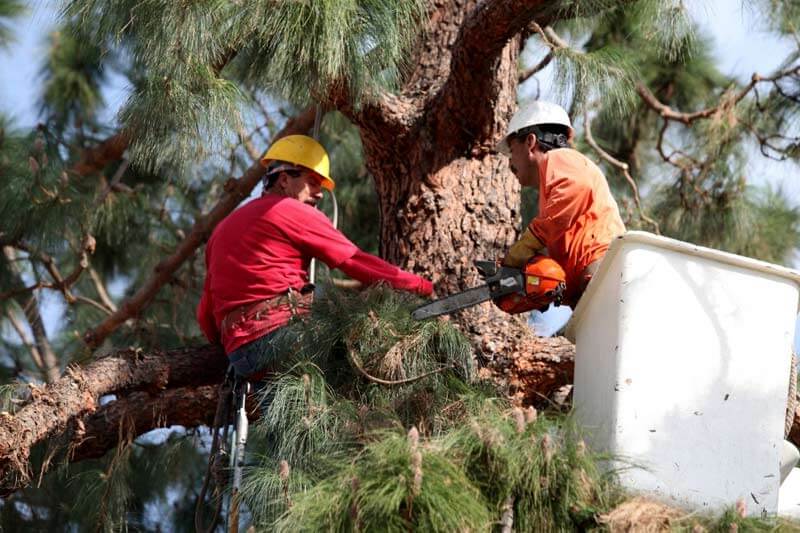
How to hire a tree removal service
Gotreequotes.com is a free tool for hiring professional tree removal service providers.
It connects homeowners to professionals in the following easy steps.
- Enter your zip code at the top of the tool.
- Fill in the form to provide more details about the tree removal service you need.
- You will receive three or four quotes and advice from professional and licensed tree removal service providers.
- Contact and hire a tree removal service that falls within your budget.
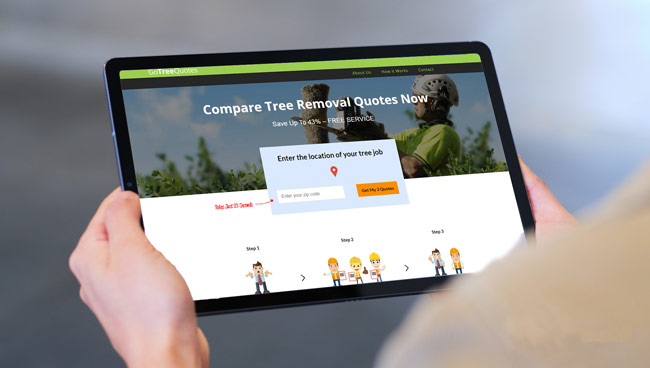
Will my home insurance cover tree removal?
Depending on your home insurance provider, storm damage tree removal will be covered. If the falling tree damages your property, your insurer will assess the damage and hire a tree removal service.
Your insurance will then cover the cost of repairs for the damaged part of your home.
Do you need a permit to remove storm damage trees?
You will not have time to apply for a permit for emergency tree removal after a storm. However, in normal times you may have to apply for one.
Whether you need a permit or not depends on where you live. Check with your local office or consult an arborist. Professional tree removers know when you need a permit to cut down trees.
If you want to remove protected trees, you will have to apply for a permit.
- American Climbers, (2021) Removing Trees Near Power Lines. <https://americanclimbers.com/removing-trees-near-power-lines/> Accessed: 20-02-2024
- Insurance Information Institute, (2019) If a Tree Falls on Your House, Are You Covered? <https://www.iii.org/article/if-a-tree-falls-on-your-house-are-you-covered> Accessed: 20-02-2024
- Davey Tree, (2022) What To Do If A Storm Damaged My Tree? <https://blog.davey.com/what-to-do-if-a-storm-damaged-my-tree/> Accessed: 20-02-2024















